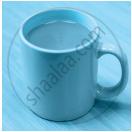Advertisements
Advertisements
प्रश्न
A retailer buys a radio for Rs 225. His overhead expenses are Rs 15. If he sells the radio for Rs 300, determine his profit percent.
उत्तर
\[\text { Radio costs = Rs } . 225\]
\[\text { Overhead expenses = Rs } . 15\]
\[\text { C . P = Rs } . (225 + 15) = Rs . 240\]
\[\text { S . P = Rs } . 300\]
\[\text { Profit = SP - CP }\]
\[ = Rs . (300 - 240)\]
\[ = Rs . 60\]
\[\text { Profit % } = \frac{\text { Profit }}{C . P} \times 100\]
\[ = \frac{60}{240} \times 100\]
\[ = 25\]%
APPEARS IN
संबंधित प्रश्न
A retailer buys a cooler for Rs 1200 and overhead expenses on it are Rs 40. If he sells the cooler for Rs 1550, determine his profit percent.
If the selling price of 10 pens is equal to cost price of 14 pens, find the gain percent.
By selling a book for Rs 258, a bookseller gains 20%. For how much should he sell it to gain 30%?
A tradesman marks his goods at such a price that after allowing a discount of 15%, he makes a profit of 20%. What is the marked price of an article whose cost price is Rs 170?
Shikha purchased a car with a marked price of RS 210000 at a discount of 5%. If VAT is charged at the rate of 10%, find the amount Shikha had paid for purchasing the car.
Using the figures given below, frame problems based on profit percent or loss percent.
Cost price ₹1600, selling price ₹ 2800
A mixer grinder marked at ₹ 4500 is sold for ₹ 4140 after discount. The rate of discount is __________
A man buys a chair for ₹ 1500. He wants to sell it at a profit of ₹ 250 after making a discount of ₹ 100. What is the M.P. of the chair?
A bought a tape recorder for Rs 8,000 and sold it to B. B in turn sold it to C, each earning a profit of 20%. Which of the following is true?
With the decrease in prices of tea by 15% Tonu, the chaiwallah, was able to buy 2 kg more of tea with the same Rs 45 that he spent each month on buying tea leaves for his chai shop. What was the reduced price of tea? What was the original price of tea?

